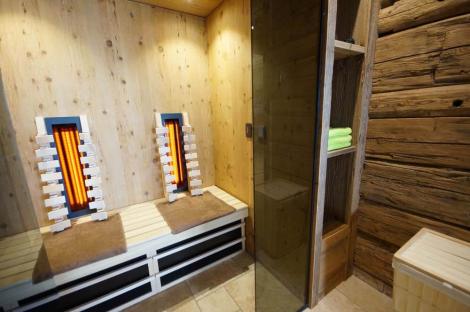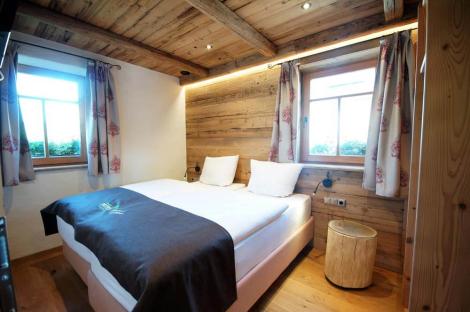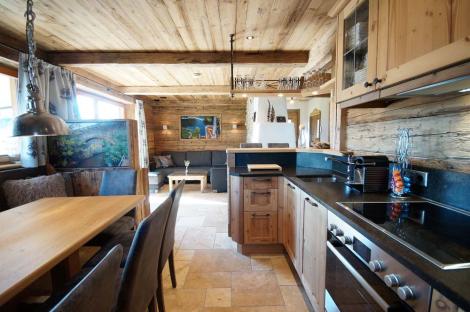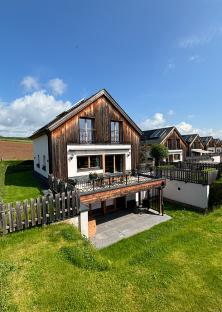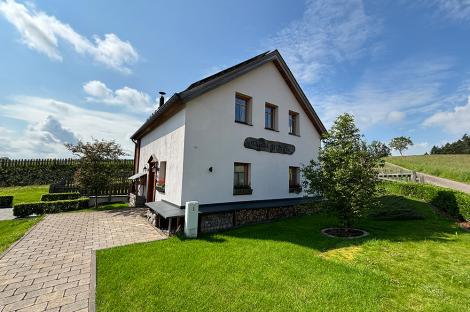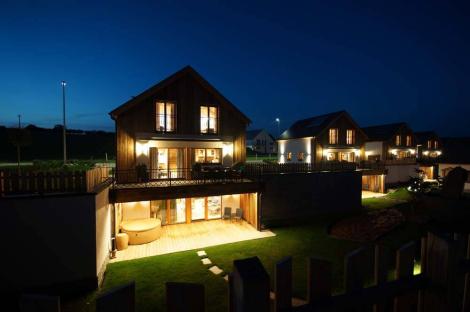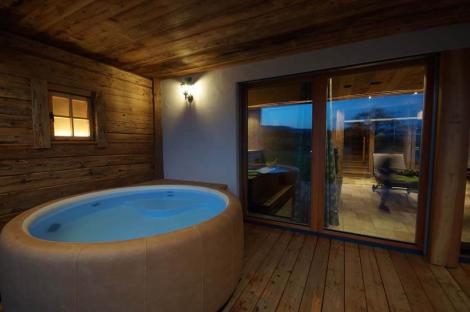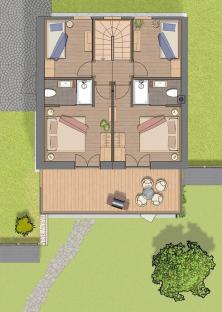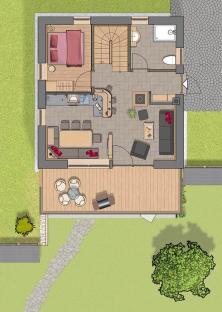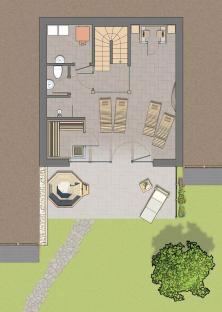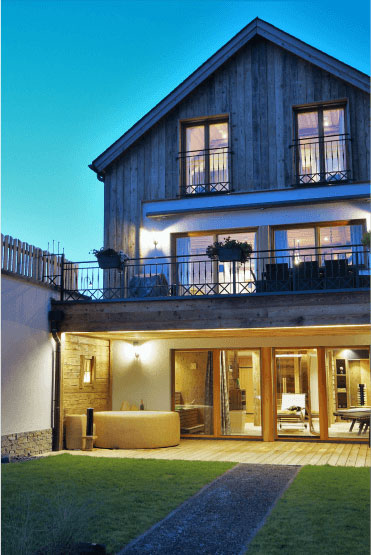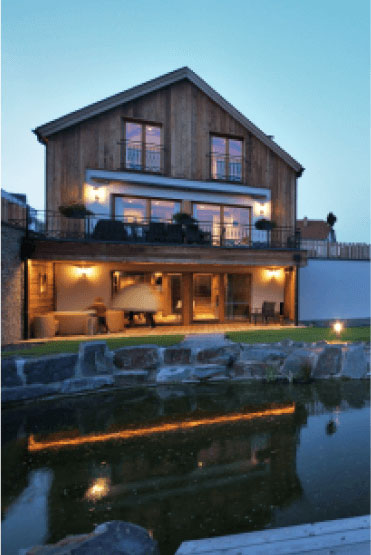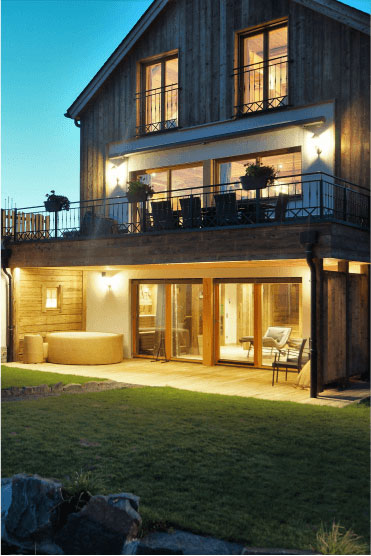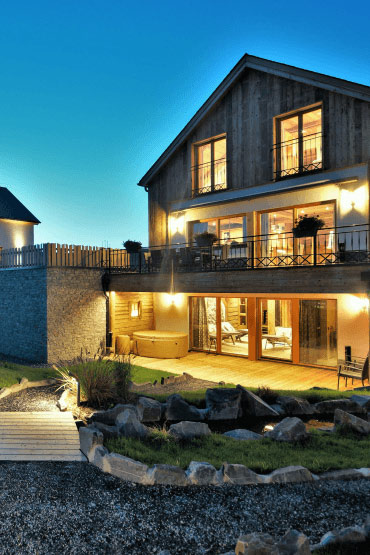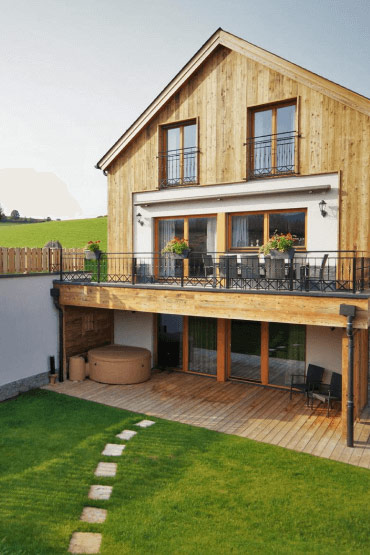Sun and Passion
This chalet is named after the river Petrusse, which evokes the sun and passion.
The Petrusse rises from the confluence of several streams in Dippecherbësch. It then flows into a valley which bears its name. The Petrusse valley is about 50 metres deep and used to form part of Luxembourg City’s natural defences. Its sandstone faces have been dug out by successive occupying military powers, in particular the French army and its military engineer Vauban, in order to bolster the city’s defensive capabilities by fortifying the rock face itself. With around 23 kilometres of underground galleries, Luxembourg’s Casemates are a remarkable example of military engineering. Part of this vast network is open to the public.
As part of the fortification works, a lock was built on the river to flood the valley and prevent any invasion from this side of the city.
The Petrusse is therefore surrounded by the Ville-Haute, or Old Town, to the left and by the plateau Bourbon and the new districts of the Gare to the right.
The Petrusse flows into the Alzette in the Grund (Gronn in Luxembourgish, i.e. the ‘bottom’ of the city).
Until 1933, the Petrusse was little more than a neglected stream. The riverbed was subsequently concreted and much effort has been invested to renature the Petrusse valley, which has been transformed into a highly appreciated green area.

2 - 8 guests

from
280 €

 Main features
Main features
This chalet can comfortably host up to 8 guests. It features a fitted kitchen, sitting room and fireplace to enjoy cosy and relaxing moments. It also offers a wellness area in the basement as well as a large terrace.

2 - 8 guests

5 bedrooms

165m²
 Living areas
Living areas
The ground floor features a kitchen and living room, as well as a bedroom and bathroom. Outside is a terrace with table, chairs, and motorised awning to enjoy the sunshine.

Fitted kitchen

Fireplace
- Wine refrigerator
- Comfortable and traditional dining area
 Bedrooms
Bedrooms
The three double rooms have double size beds (180 cm).
Each of the two single rooms has a large single bed (140 cm).

5 bedrooms

Bathroom
- One bedroom and bathroom on the ground floor (2 guests) with 180 cm double size bed
- Two upstairs bedrooms (1 or 2 guests each) with large 140 cm single beds
- Two upstairs bedrooms (2 guests each) with bathroom (shower and WC) and 180 cm double size beds
 Wellness area
Wellness area
The basement is entirely dedicated to wellness, with a generous terrace fitted with privacy screens and a small garden. Reclining chairs and garden furniture are also at your disposal.

Jacuzzi

Sauna
- Infrared cabin
- Reclining chairs
 Other services
Other services
For greater peace of mind, we take care of the laundry and bed linen.
Enjoy a complete, hearty breakfast served to your chalet.
You can hire bicycles with our partner “Rent a bike” to discover the surrounding area.
A massage service is also available on reservation. Indulge yourself!

Breakfast

TV / WiFi

Barbecue
- Daily houseservice with towel change
- Massage and care services
- Mountain bike or e-bike rental
- Access to common areas
Discover our other chalets
Our chalets offer a range of charming backdrops for you to enjoy. Choose your setting and let us guide you.

2 - 8 guests

from
280 €

